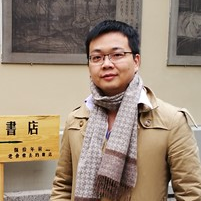Topic Menu
► Topic MenuTopic Editors






Grand Challenges of Advanced Technologies in Sustainable Agriculture 4.0: Future Farming, Harvesting and Preservation
Topic Information
Dear Colleagues,
The global population is expected to be 9.2 billion in 2050, and the world will need to produce 70 percent more food. Meanwhile, agriculture’s share of global GDP has shrunk to just 3%, one-third its contribution just decades ago. The reality is that very few innovations have taken place in the industry of late, and they are far from enough. Farms and agricultural operations will run quite differently. Future agriculture will use integrated Agriculture 4.0 technologies such as robots, temperature and smart sensors, aerial images, and 3S technologies. These advanced devices, precision agriculture, and robotic systems will allow farms to be more profitable, efficient, safe, and environmentally friendly. The main aims of this focused section in collaborative journals are to present the current state of the art in advanced technologies in sustainable agriculture 4.0—future farming, harvesting and conservation—and to illustrate new results in several emerging research areas. Submissions can present theoretical and experimental aspects in these areas. The collection covers six sections: (1) Smart agricultural machinery; (2) 5G-based Internet of Things in Agriculture 4.0; (3) Smart Sensors in Agriculture 4.0; (4) 3S technologies in Agriculture 4.0: remote sensing, GIS, GPS; (5) High-throughput crop phenotyping; (6) Unmanned aerial vehicles in Agriculture 4.0.
Dr. Yunchao Tang
Dr. Liang Gong
Dr. Lufeng Luo
Dr. Junfeng Gao
Dr. Ya Xiong
Dr. Chao Chen
Dr. Hao Gan
Dr. Huaibo Song
Topic Editors
Keywords
- advanced autonomy
- unmanned mechatronics systems
- agricultural robotics
- digital agriculture
- cooperative mechatronics
- soft-grasping/soft-robotics manipulators
- path planning
- UAV
- smart sensors
- IOT
- crop phenotyping
- crop estimation
- computer vision
- data-driven sustainability
- precision farming
- life cycle health monitoring of crops
Participating Journals
| Journal Name | Impact Factor | CiteScore | Launched Year | First Decision (median) | APC |
|---|---|---|---|---|---|

Agriculture
|
3.6 | 3.6 | 2011 | 17.7 Days | CHF 2600 |

Agronomy
|
3.7 | 5.2 | 2011 | 15.8 Days | CHF 2600 |

Forests
|
2.9 | 4.5 | 2010 | 16.9 Days | CHF 2600 |

Horticulturae
|
3.1 | 2.4 | 2015 | 14.7 Days | CHF 2200 |

Remote Sensing
|
5.0 | 7.9 | 2009 | 23 Days | CHF 2700 |

Sensors
|
3.9 | 6.8 | 2001 | 17 Days | CHF 2600 |

MDPI Topics is cooperating with Preprints.org and has built a direct connection between MDPI journals and Preprints.org. Authors are encouraged to enjoy the benefits by posting a preprint at Preprints.org prior to publication:
- Immediately share your ideas ahead of publication and establish your research priority;
- Protect your idea from being stolen with this time-stamped preprint article;
- Enhance the exposure and impact of your research;
- Receive feedback from your peers in advance;
- Have it indexed in Web of Science (Preprint Citation Index), Google Scholar, Crossref, SHARE, PrePubMed, Scilit and Europe PMC.



